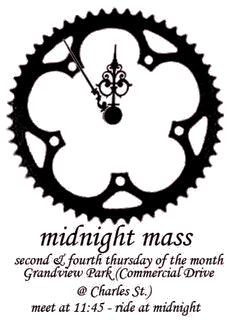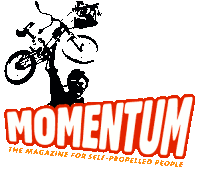30.1.13
If anyone is interested this project could use your help!
Cheers,
Heather
~~~~~~~~~~~~~~~~~~~~~~~~~~~~~~~~~~~~~~~~~~~~~~~~~~~~~~~~~~~~
JOIN THE ARTRIKE TEAM TO GET VANCOUVER'S FIRST BIKE-PROPELLED STAGE ONTO ITS STREETS!
The Artrike is a pedal-powered and propelled, multi-functional stage in development that is intended for interdisciplinary, community-engaged theatre productions. This project is being funded by Instruments of Change (instrumentsofchange.org,) a Vancouver-based non-profit that uses the arts as an educational tool to empower people to become instruments of transformative change in their own lives.
Last year, we were fortunate to be selected by the UBC Mechanical Engineering Capstone Course, to have our structure built by their fifth year students. And their tremendous effort resulted in a two-thirds completed project. However, while these students contributed many generous hours to our project, the scope of this endeavor was too large to complete in one year. So now, we have a well-built, highly-origiNal, partially-completed structure that still has a few phases of design and construction yet to finish. And we are hoping, like with our UBC partnership, that this project is something which will be able to challenge and provide skill building opportunities for other artists and.or institutions in BC. Therefore, we are placing a Call to All Bike Advocate Artists/Engineers/Industrial designers to contact us (laura@~@laurabarron.net) if they have either the space, time, or skills to help us complete the construction of this structure, which promises to become a Vancouver cycling and arts fixture when it is finished.
Most immediately, we need a place to store the structure since we have been asked to remove it from UBC property shortly. It is disassembled at the moment and would require only about a 16 foot long, by 4 foot wide, by 6 foot high space to store. Such temporary storage would be extremely helpful until that time when we can secure a future space for construction and completion. Please keep in mind that Instruments of Change intends for all of our Artrike partners (whether cycling advocates, storage facilities, builders, or designers) to have a vested interest and involvement in the ongoing project. So, parties who can imagine contributing to this endeavor in any way, either during construction, or once it becomes an active piece of mobile art that provides a space for collaboration, innovation and education, are welcome to contact us.
We look forward to the email rolling in!
Best,
Laura
21.1.13
UK study on road deaths - driving, biking, walking very similar
As of Mon Jan 21 2013 12:45:04 GMT-0500 (EST)
| " | … Results Fatalities per million hours' use (f/mhu) varied little (0.15-0.45f/mhu by mode for men, 0.09-0.31f/mhu for women). Risks were similar for men aged 21-49 years for all three modes and for female pedestrians and drivers aged 21-69 years. The group most at risk for each mode were: - male drivers aged 17-20 years (1.3f/mhu, 95% CI 1.2, 1.4); - male cyclists aged 70 years or older (2.2 f/mhu, 1.6, 3.0) and - female pedestrians aged 70 years or older (0.95 f/mhu, 0.86, 1.1). In general, fatality rates were substantially higher amongst males than females, except for drivers aged 60 years or older. Risks per hour for male drivers under 30 years were similar or higher than for male cyclists; for 17-20 year olds the risk was higher for drivers (33/Bn km, 95% CI 30, 36; 1.3f/mhu, 1.2, 1.4) than cyclists (20/Bn km, 10, 37; 0.24f/mhu, 0.12, 0.45) using distance or time. Conclusion … Males aged 17-20 years old face higher risks as drivers than as cyclists, and do not achieve better safety as drivers until over 30 years. Not making like-for-like comparisons sustains the misleading stereotype that cycling is relatively hazardous. … |
5.1.13
BICYCLE URBANISM SYMPOSIUM
This looks interesting. http://www.be.washington.edu/bicycleurbanism/
BICYCLE URBANISM SYMPOSIUM
REIMAGINING BICYCLE-FRIENDLY CITIES
June 19 – 22, 2013, University of Washington Campus – Seattle, WA
SYMPOSIUM REGISTRATION IS OPEN - Learn more below
Call for Abstracts – Deadline February 1, 2013 – Learn more below.
 Vancouver Critical Mass
Vancouver Critical Mass










